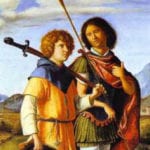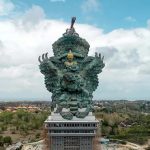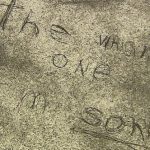 Our World
Our World  Our World
Our World  Pop Culture
Pop Culture 10 Incredible Female Comic Book Artists
 Crime
Crime 10 Terrifying Serial Killers from Centuries Ago
 Technology
Technology 10 Hilariously Over-Engineered Solutions to Simple Problems
 Miscellaneous
Miscellaneous 10 Ironic News Stories Straight out of an Alanis Morissette Song
 Politics
Politics 10 Lesser-Known Far-Right Groups of the 21st Century
 History
History Ten Revealing Facts about Daily Domestic Life in the Old West
 Weird Stuff
Weird Stuff 10 Everyday Products Surprisingly Made by Inmates
 Movies and TV
Movies and TV 10 Actors Dragged out of Retirement for One Key Role
 Creepy
Creepy 10 Lesser-Known Shapeshifter Legends from Around the World
 Our World
Our World 10 Science Facts That Will Change How You Look at the World
 Pop Culture
Pop Culture 10 Incredible Female Comic Book Artists
 Crime
Crime 10 Terrifying Serial Killers from Centuries Ago
Who's Behind Listverse?

Jamie Frater
Head Editor
Jamie founded Listverse due to an insatiable desire to share fascinating, obscure, and bizarre facts. He has been a guest speaker on numerous national radio and television stations and is a five time published author.
More About Us Technology
Technology 10 Hilariously Over-Engineered Solutions to Simple Problems
 Miscellaneous
Miscellaneous 10 Ironic News Stories Straight out of an Alanis Morissette Song
 Politics
Politics 10 Lesser-Known Far-Right Groups of the 21st Century
 History
History Ten Revealing Facts about Daily Domestic Life in the Old West
 Weird Stuff
Weird Stuff 10 Everyday Products Surprisingly Made by Inmates
 Movies and TV
Movies and TV 10 Actors Dragged out of Retirement for One Key Role
 Creepy
Creepy 10 Lesser-Known Shapeshifter Legends from Around the World
10 Intriguing Hieroglyphic Texts
The hieroglyphic writing of the ancient Egyptians has fascinated outsiders for millennia. One ancient Greek visitor to Egypt left a graffito on the tomb of Ramses V that complained, “I cannot read the hieroglyphics.” Using pictorial images called hieroglyphs, the Egyptians carved, painted, and wrote a vast number of texts. But for almost 1500 years, the ability to read hieroglyphs was lost, even to the Egyptians. The work of researchers to find and translate these writings has revealed a huge amount about ancient Egyptian culture.
Here are ten of the most intriguing hieroglyphic texts to emerge from the sands of Egypt.
Related: 10 Intriguing Mysteries Of Atenism In Ancient Egypt
9 The Rosetta Stone
The secret of reading hieroglyphic texts was revealed to Europe by the conquests of Napoleon. When Napoleon led his army into Egypt, he also took scholars, artists, and scientists with him. In 1799, a strange black stone was found that was marked with Egyptian hieroglyph, the everyday writing of Egyptians called demotic, and ancient Greek. Crucially, all three texts were identical but written in different languages. Comparison between the hieroglyphic text and the known Greek one allowed scholars to crack the code.
Following Napoleon’s defeat, many of the treasures he had looted from Egypt, including the Rosetta Stone, passed into British hands. Copies of the texts were sent around Europe. The first breakthrough came from comparing the names of kings on the stone. Once it was realized hieroglyphs represented syllables, it became simpler, though not easy, to begin translating the writing.
Despite being of massive importance to Egyptology, the contents of the Rosetta Stone text is somewhat boring. It records details of the anniversary of king Ptolemy V’s accession to the throne.[1]
9 The Pyramid Texts
Inside the grand pyramids built to house the mortal remains of pharaohs from around 2400-2200 BC, long inscriptions were carved directly onto the stones inside. The Pyramid Texts, as they are known, were not meant to be viewed by anyone but the departed ruler. They offer advice for how the pharaoh should navigate the afterlife and are the earliest funeral texts from ancient Egypt.
The contents of the texts are a mixture of instructions to the pharaoh’s soul, priestly prayers, and spells to be used to pass each point of the underworld. Short spells were also included to make sure that the tomb and body of the dead king were not disturbed. These did not work, it seems, as all pyramids were robbed in antiquity.
The pharaoh could be sure of a more happy welcome in the afterlife, but he could also offer help to the living. In the pyramid of Unas, we find that he is told, “How pleasant is your condition! You become a spirit, o Unas, among your brothers, the gods. How changed, how changed is your state! Therefore protect your children! Beware of your border which is on Earth! Put on your body and come toward them!”[2]
8 Book of the Dead
Unlike the Pyramid Texts, which were only used for the rulers of Egypt, the Book of the Dead was available to anyone who could afford a copy. As a result, large numbers of copies of this text have been found in Egyptian tombs and sarcophagi dating from 1550-50 BC. The Book of the Dead was easier to get as it did not need to be carved in stone or painted directly on a coffin but could instead be bought on papyrus. Sometimes these papyri could be impressively large—one was recently found that was 52.5 feet (16 meters long).
The text of the Book of the Dead is made up of individual spells that help a soul make their way successfully through the afterlife. Some spells protect the dead from demons, while others help to preserve the powers of the dead. One hundred ninety-two spells have been found, and not all texts contain the same ones.
The most famous spell of the Book of the Dead is Spell 125, which describes the weighing of the heart, which occurs to all souls. The dead person’s heart is weighed on a scale against the feather of Maat. If the heart is heavy with sins, then the scale drops, and the soul of the dead person is eaten by the terrifying hippo goddess Ammit. If you pass the test, you are allowed into the Kingdom of Osiris.[3]
7 King Neferkare and General Sasenet

Not all hieroglyphic writings were religious in nature. There was a strong literary tradition that examined the actions of the pharaohs. Pepi II Neferkare ruled Egypt around 2250 BC, and his reign was marked by a decrease in the power of the pharaohs and increased tension within the kingdom. Shortly after his rule, the Old Kingdom ended with bloody civil wars.
It is perhaps understandable that people did not look back on Neferkare fondly. A very fragmentary text has been recovered from a papyrus, a shard of pottery, and a wooden plaque that may link the pharaoh’s failure to his perceived homosexuality. This text records how Neferkare was spotted making nightly visits to the home of his general Sasenet. When he arrived, we are told he “threw a brick after stamping with his foot. Then a ladder was lowered to him, and he climbed up.” We also learn the visit lasted for four hours and only ended “after his majesty had done that which he had wanted to do with him.”
Was Neferkare having sex with his general? Was this text meant to mock the weak pharaoh? Many questions remain, but it may be a vital clue in understanding how homosexuality was viewed in ancient Egypt.[4]
6 Story of Sinuhe
The Story of Sinuhe is a masterpiece of ancient Egyptian literature. This text dates to around 1875 BC and records the probably fictional adventures of a man called Sinuhe.
Sinuhe was serving in the army of a prince of Egypt when he heard that the old pharaoh had died. Worrying about the uncertain times ahead, Sinuhe fled to a hiding spot behind a bush. When he left Egypt, he found the chieftain of a tribe he knew and married his daughter. After several military adventures and winning a single combat against an enemy, Sinuhe began to miss his old homeland. He prayed for pity from the gods that he might be buried in Egypt and receive a pardon from the new pharaoh.
Back in Egypt, we are told how “a stone pyramid was built for me in the midst of the pyramids. The masons who build tombs constructed it. A master draughtsman designed in it. A master sculptor carved in it. The overseers of construction in the necropolis busied themselves with it. All the equipment that is placed in a tomb shaft was supplied. Mortuary priests were given to me. A funerary domain was made for me. It had fields and a garden in the right place, as is done for a Companion of the first rank. My statue was overlaid with gold, its skirt with electrum.” For an Egyptian having the right tomb was the happy ending.[5]
5 Narmer Palette
The Narmer Palette is one of the earliest historical documents that has survived, made around 3200 BC. It also contains some of the earliest hieroglyphic symbols ever discovered. The large stone platter is intricately carved with imagery that has allowed scholars to theorize about what exactly it represents.
The palette was designed to be used to grind up the powders involved in either painting or makeup but may have been more of a ceremonial object. On the back, various beasts can be seen, as well as a man wearing the Red Crown of Lower Egypt who stands more than twice the size of those around him. On the front of a huge man wearing the White Crown of Upper Egypt who is striking down a foe. Above this figure are symbols representing a catfish and a chisel. These hieroglyphs represent the sounds n’r and mr—this figure is Narmer.
These early hieroglyphs, along with the imagery employed on the palette, have been interpreted as telling us that Narmer was the pharaoh who united Upper and Lower Egypt into one kingdom. Narmer does sound like a strong leader. His name can be translated as “Fierce Catfish.”[6]
4 Great Hymn to Aten
Most people view Egypt as a very stable and long-lasting civilization. Throughout its long history, there were innovations, however, even in religion. Perhaps the most explosive revolution in Egyptian belief came under the leadership of the pharaoh Akhenaten when he tried to force the worship of his own god, Aten, on the Egyptians.
Akhenaten ruled from around 1350 BC, and he changed everything to show the power of his new faith. The names of the royal family were made to include Aten, a unique artistic style was developed, and he founded a new city at Amarna as the capital of his realm. He also produced new prayers to his god. The Great Hymn to Aten was written to praise the new order in religion.
Aten is imagined like the sun. We are told he rises in the east, sparkles, and his rays are what hold the lands together. When Aten sets, people hide in their rooms and sleep as though they are dead. All good things come from Aten, and coincidentally, Akhenaten is his son.
The religion of Atenism did not long survive Akhenaten. The pharaoh’s image was stripped from monuments, his capital abandoned, and Egypt went back to the old gods.[7]
3 Diary of Merer
There is still a lot of misinformation about how the pyramids of Egypt were built. Mistaken ideas started early. The ancient Greek writer Herodotus tells us that he heard from the priests of Egypt that they were constructed by slaves. Archaeology has shown that, in fact, the workers were paid for their labor. But one text discovered in 2013 may shed more light on the pyramids’ construction, as well as being the oldest hieroglyphic text written on papyrus.
The papyri were discovered in caves on the Red Sea that had been built to store boats. Written during the reign of the pharaoh Khufu by a middle-ranking civil servant called Merer, these texts are a logbook of work undertaken in moving monumental stones. Merer records how each month he shipped 200 blocks of limestone, each weighing over two tons.
What does this have to do with the pyramids? Khufu’s tomb was the Great Pyramid of Giza, and it was once clad in shining white limestone. This text gives us a link to those responsible for this massive building project.[8]
2 Graffiti
Writing in hieroglyphs was a highly specialized skill performed by scribes. The number of people who could read hieroglyphic inscriptions was probably equally limited. This means fewer texts written by ordinary people have survived – but there are some graffiti written in hieroglyphs that offer a view of life not always recorded in official texts.
In the necropolis of Saqqara, a number of intriguing writings have been found. One shows the outline of a pair of feet with text around the edge. The maker of this graffito tells us that he wanted his name to endure as long as the temple on which it was carved stood. Other writers simply carved their name’s into a building—the same way modern graffiti artists do.
Sometimes hieroglyphic graffiti is discovered in out-of-the-way places in temples where no human would be expected to see them. These people were probably calling on the gods to witness their devotion. Sometimes an inscription is discovered on stone that was later covered in plaster. No one would ever see those writings, but maybe the gods could still see them.[9]
1 Graffito of Esmet-Akhom
On August 24, AD 394, a priest carved an inscription on the wall of the Temple of Philae beside an image of the god Mandulis. This, as far as we know, was the last time hieroglyphics were written in ancient Egypt.
This graffito by Esmet-Akhom marks a transitional point in Egypt. The temple where his family had served for generations was at the very edge of the Roman world at this point. In AD 391, the emperor Theodosius ordered that all pagan temples be shut down. That this temple continued to be maintained was because it was just outside the hands of those who wanted to enforce Christianity.
The inscription in hieroglyphs reads, “Before Mandulis, son of Horus, by the hand of Nesmeterakhem, son of Nesmeter, the Second Priest of Isis, for all time and eternity. Words spoken by Mandulis, lord of the Abaton, great god.” Another written in Demotic gives the exact date.
There are later graffiti at the temple site, but they are written in Greek. Hieroglyphs as a method of writing died. [10]






